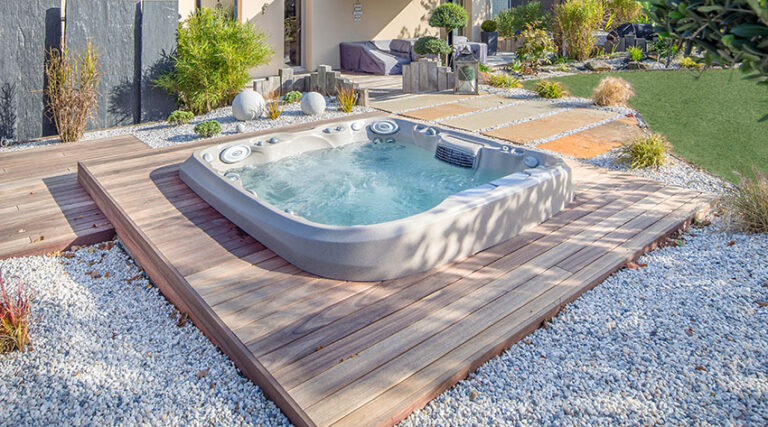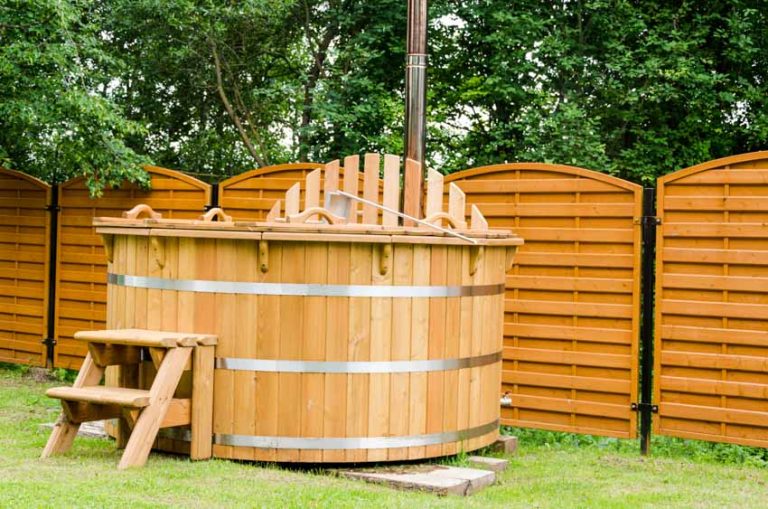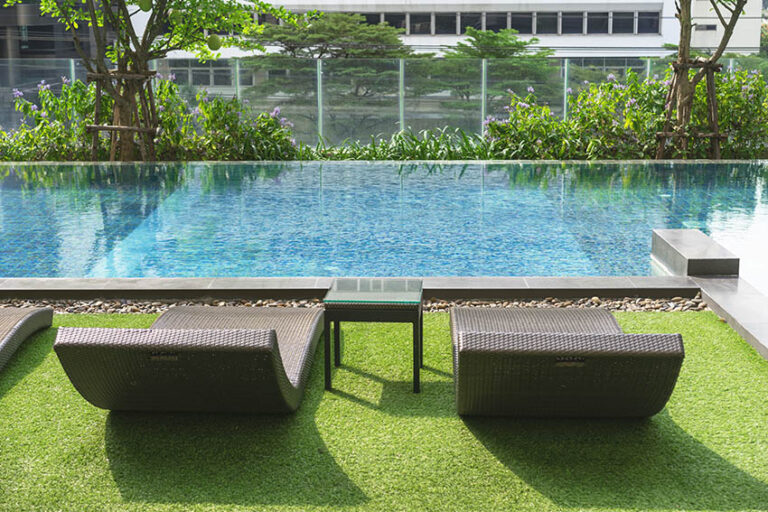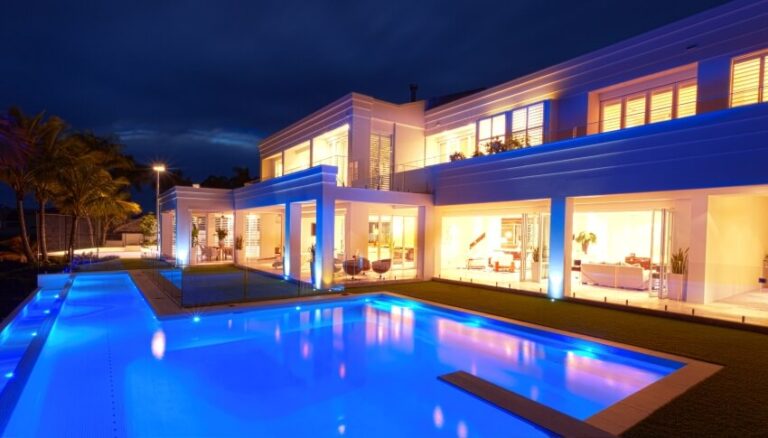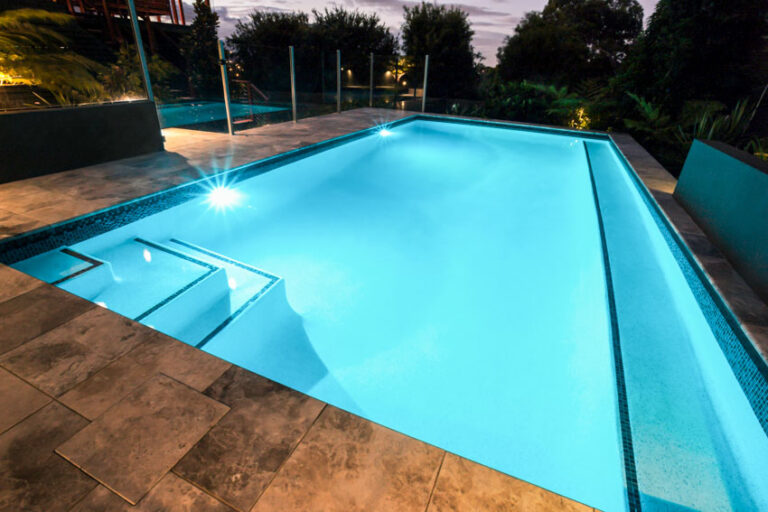Types Of Pool Covers (Designs & Pros and Cons)
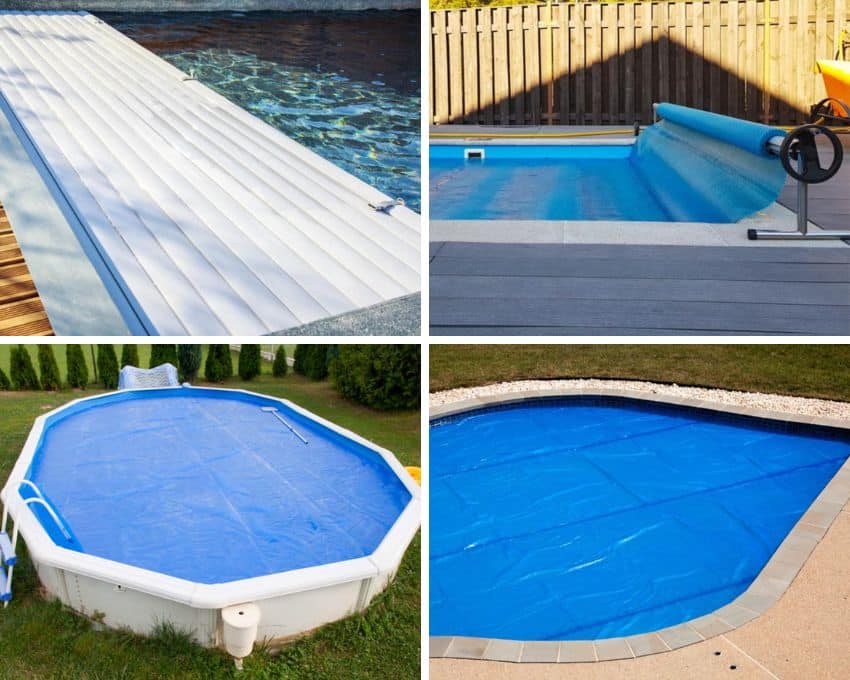
The different types of pool covers offer protection, convenience, and improved efficiency. Covering your swimming pools saves people from falling in and drowning. Moreover, it keeps debris away from the swim spaces, which reduces maintenance considerably. These covers are a crucial addition worth buying since safety is a major priority for all swimmers.
If you have conducted any cover exploration, you probably got confused by the numerous selections offered and started wondering which option is best for you. Therefore, what then, is the best option for your wading area needs? In this article, we will break down the several forms of covers for pools and provide you with the information you need to identify which is the most ideal swimming protection for your preferences.
Quicklook: Different Cover Types For Swimming Pools
- Standard Winter
- Mesh Safety
- Hard Safety
- Hybrid Safety
- Solar
- Automatic
Standard Winter Covers for Pools
These types of coverings are the tried-and-true standard options. The basic sheet employed for this hood is adaptable enough to be applied for either in-ground or above-ground swimming pools.
These are the covers that resemble massively-sized tarps. They float above your water surface and are held in place by a set of water packets. They do an excellent job of taking debris out of your wading area, particularly if they are made out of a robust non-permeable material.
Winter covers, on the other hand, are not designed to hold heavy loads. This encompasses everything from torrential rain to a stray animal. As a result, putting up a pool fence or boundary around the area is an important idea for safety.
In terms of maintenance, you should anticipate draining out excess water on a regular basis. You can use a submersible pump or a bucket to execute this activity. Furthermore, it is indeed worth noting that standard winter covers are the least expensive options available. Thus, if you have a small budget for covers, winter covers would be an incredible option.

Why Choose This Type of Winter Cover for Pools
Pros:
• It is very inexpensive.
• It is easy to install.
• It performs an incredible job in terms of blocking UV rays.
• It effectively keeps debris away from the swim area.
Cons:
• It has a short life expectancy. The tarp would normally have to be replaced every 5 years.
• The water anchors that hold the tarp will also need to be replaced more frequently, roughly every other year.
What are the Standard Materials Used for Winter Covering for Pools?
Polyethylene, a widely manufactured and multifunctional type of plastic, is one of the most popular materials used in the production of a standard winter shield. It is also well-known for its lightweight, strong, and long-lasting properties. Hence, it is used as the primary material in practically all standard winter protection cloaks for pools.
What Is the Standard Cost for Winter Covering for Pools?
Winter covers are some of the most affordable in-ground and above-ground types of coverings, with prices ranging from $50 to $175 on average. For stronger, more resilient coverings with lengthier warranties, the cost can potentially rise to more than $300, which is still inexpensive.
Mesh Safety Covers
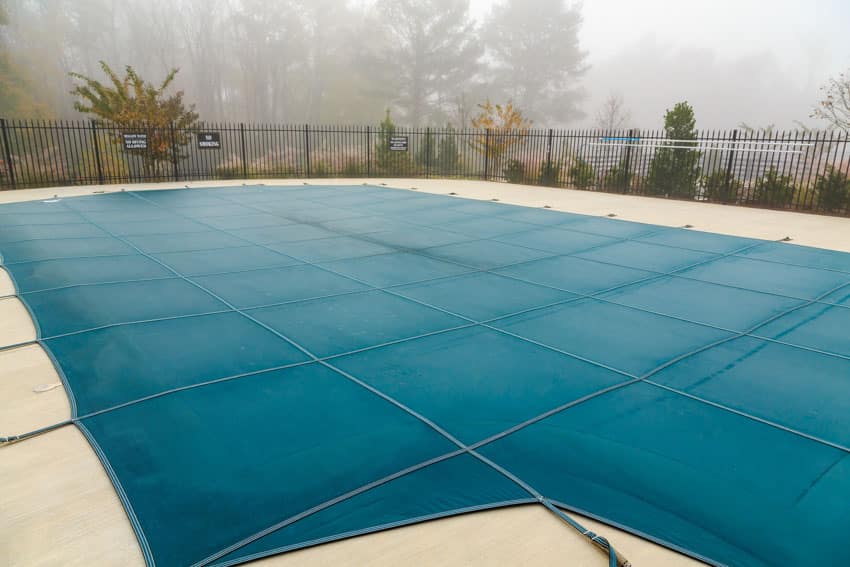
A mesh safety wrap is one of the most recent styles of coverings for in-ground swimming area. This varies from a standard tarp shield in that it enables water and melting snow to travel past the mesh and then into the wading area. Because of its advanced design, it can help swimmers conserve water.
Furthermore, mesh safety covers keep out any waste that might normally infiltrate your wading area . Mesh covers, on the other hand, allow water and other elements easily due to their densely woven strands. This excludes the necessity to drain, simplifies maintenance, and saves load on the wrap, hence extending its longevity.
Mesh safety covers compensate for the shortcomings of winter types of covers. They last two times longer than standard winter covering, can handle a lot of weight, and stay put thanks to strong and heavy-duty anchors.
Such covers are secured with a set of anchors and spring accessories and can be custom-tailored to the contour of your swimming space.
It also renders them more lightweight than their equivalents, which are the solid and automated covers, allowing them to be quickly rolled up and stowed out of the way when not being used. Its minimal weight also makes setup easier than with a solid-types heath.
In addition, the mesh content of such covers enables light to enter the wading area. This maintains the warmth of the water; however, the sunlight also increases algae growth on the walls, which implies you will have to make extra effort to have your swim lagoon prepared for users when the weather warms up.
Benefits and Drawbacks of the Mesh Type Covers
Pros:
• It is very lightweight; it is considered the lightest guard of them all.
• The mesh acts as a filter to prevent the trash from letting in while permitting the water to gently fill the swimming area without overflowing, allowing swimmers to conserve funds on water bills every year.
• This cover’s robust safety structure can also protect individuals from drowning and falling in the swimming area.
• The guard can withstand substantial weight, ensuring your safety from swim related fatalities and incidents.
Cons:
• A mesh safety guard is one of the most costly covers available, and it necessitates some hardware installation all over your wading area to operate effectively.
• The mesh itself defends against solid substances and trash, but it does not deflect UV rays, thus, your swim area liner can eventually fade, even while covered.
Popular Materials for Mesh Safety Guards for Pools
The majority of mesh safety covers are made entirely of polypropylene. This material has a very high bursting capability. Mesh fibers enable all of the water to flow into the lido. Nevertheless, the fabrics are often made of one of these two materials: woven mesh or solid vinyl.
How Much Does It Cost to Buy a Mesh Safety Cover for Pools?
Mesh safety coverings often range in price from $800 to $1,500 or higher. You could be able to purchase one for as little as $500 at a supply store, but the price will vary depending on the swimming pool sizes, materials, and brands. If you own an inground wading area, you should expect to pay roughly $1,200 or more.
Hard Safety Covers
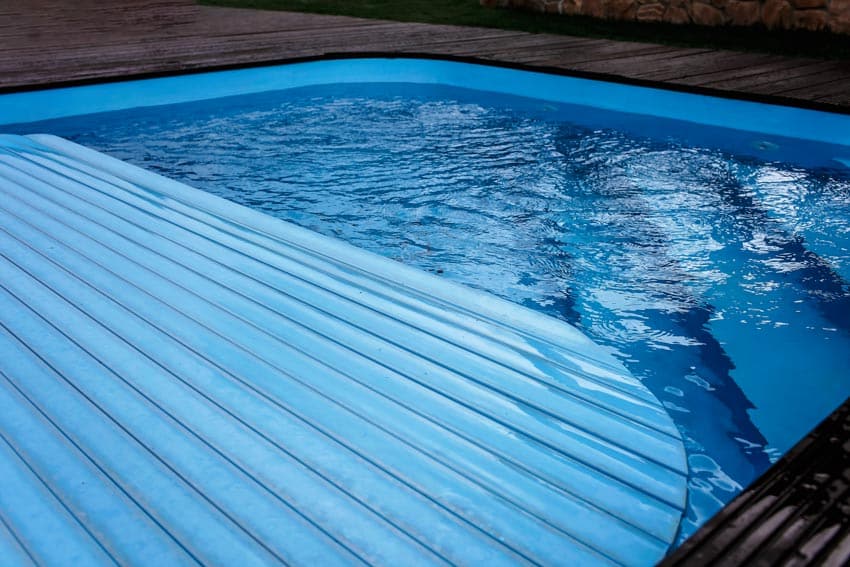
Hard safety covers for pools are comparable to mesh covers in many ways, with one important exception: the material they are composed of. These types of covers are normally constructed of non-permeable vinyl and have many of the same properties as mesh coverings. However, because the material is impermeable, water and snow cannot travel through it. As a result, it accumulates on top.
Therefore, the majority of solid safety coverings contain a submersible pump. The pump is located in the middle of the covering and empties water mechanically. On the bright side, robust safety coverings give UV shielding and excellent water insulation. Furthermore, robust safety types of covers can be custom-fit according to your pool’s design and are attached to the deck with anchoring and hinges. They are often made of vinyl, yet they could still be folded and stored if not in operation.
The impervious covering keeps dirt, water, and sunlight out of the lido. This implies that when you open your swim enclosure during the summertime, there will be no algae buildup or dirty water, resulting in less upkeep. Nonetheless, any water that collects on the cover and unwanted leaves or detritus will have to be pumped off. However, an automatic covering pump can be installed on the covers, which will activate and deactivate whenever water is sensed.
Benefits and Drawbacks of Hard Covers for Pools
Pros:
• A hard safety covering is extremely durable, effectively preventing ultra-fine particles from entering the water, and it keeps the water very clean.
• It offers outstanding UV protection, extending the life of your in-ground pool’s internal liner and color.
Cons:
• Its lifespan is shorter than mesh safety covers. Plus, it will need the initial installation of anchors.
• You will have to drain water from time to time.
What Materials Are Used for the Hard Type Covering?
To safeguard your wading area and your family members, hard safety covers are generally made of solid sheets of material, usually reinforced vinyl, to provide the utmost durability and reliability.
Cost of a Hard Vinyl Cover for the Pools
A hard safety wrap normally costs around $1,800 to $3,600, which is around $600 higher than a mesh safety guard in terms of the average cost.
Hybrid Safety Covers
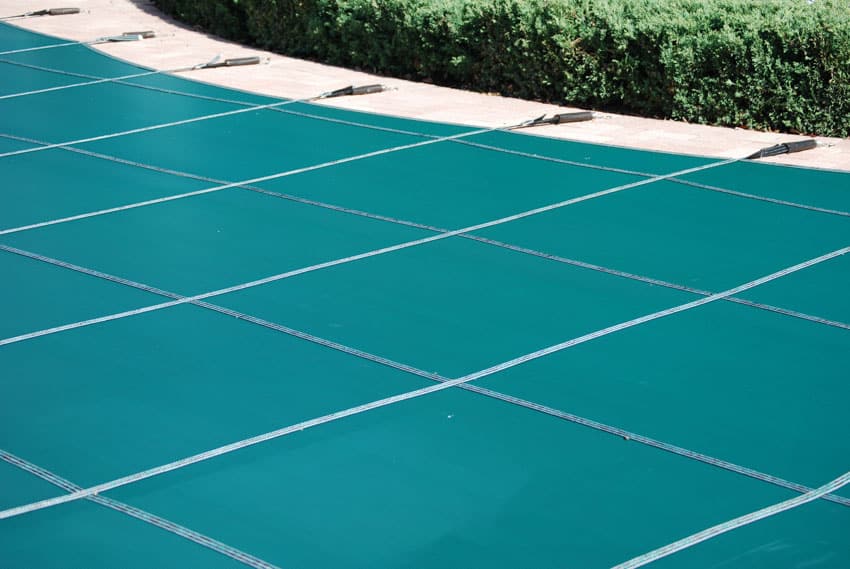
Hybrid safety covers are a combination of solid and mesh safety wading are coverings. Thus, as a result, they naturally provide the best of both worlds. This type is made up of a number of vinyl patches and a tiny portion of the mesh. Several individuals who are undecided whether a mesh or hard cover is the ideal option choose a hybrid cover.
This cover, just like a mesh covering, is water-permeable but also provides the protection offered by a hard shield. Moreover, this structure enables the coverings to drain like a mesh while also filtering UV radiation and finer pollutants like a hard pool cover.
The Good and the Bad About Hybrid Types
Pros:
• In terms of water draining, safe coverage, and UV resistance, this style of cover provides the best of both worlds.
• A hybrid cover can support a significant amount of weight.
• It offers sensitive and efficient filtration.
Cons:
• For proper anchoring, this type of cover necessitates rigorous installation.
• It is very costly.
Hybrid Style Materials
A hybrid safety cover is generally made up of several materials, including vinyl patches and a modest portion of the mesh. This structure allows the coverings to drain like mesh while also filtering UV radiation and finer pollutants like a hard safety cover.
Price of A Hybrid Cover
Since hybrid safety types of swim facility covers serve two purposes, they are usually more expensive than hard safety and mesh safety covers, Their cost typically ranges from $600 to $2500.
Solar Pool Covers
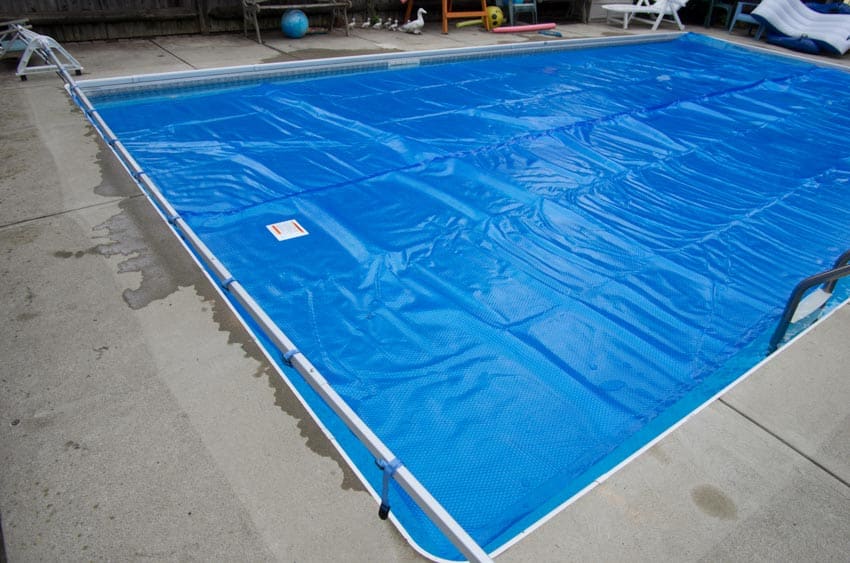
Although solar swim area covers are not frequently used for the same purposes as the covers discussed above, they are, nonetheless, worth discussing. The primary objective of a solar cover is by insulating your wading area instead of protecting it. It accomplishes this by forming a barrier that traps the heat and reduces evaporation.
Solar covers are inexpensive and ideal for swimmers who want to optimize the heat conservation of their pools. Furthermore, the same as the previous covers, they do an excellent job of preventing water loss.
A solar cover is sometimes referred to as a bubble cover since it is typically a thin cover with air bubbles all around it. It captures solar heat and can raise the temperature of your wading area by up to 8 degrees. Installation is uncomplicated, and after the cover has been sized and trimmed to fit the design of your pool, it will be available to be used.
Furthermore, it aids in reducing the volume of filth and detritus that enters your swimming area. With this particular type of cover, numerous owners are using a cover roller to make it simpler to place on and remove from the pools. However, a cover roller is not a necessity when using a solar cover.
What’s Good and What’s Bad About Solar Coverings
Pros:
• Solar covers are very easy to install and remove.
• They efficiently insulate your wading area .
Cons:
• They only float on top of the wading area . The coverage it offers is not that secure.
• They cannot support any amount of weight.
Bubble Pool Cover Safety Materials
Solar types of pools covers are frequently composed of strong plastic with UV protectors that resemble bubble packing materials.
How Much Should I Pay for Solar Covers?
Most solar coverings generally cost $75 to $225. As you may expect, the cost varies depending on the design, quality, and complexity of the cover as well as the size of your wading area . The reel, which is usually in the $200 to $500 area, would be the major cost when purchasing a solar cover.
Automatic Covering for Pools
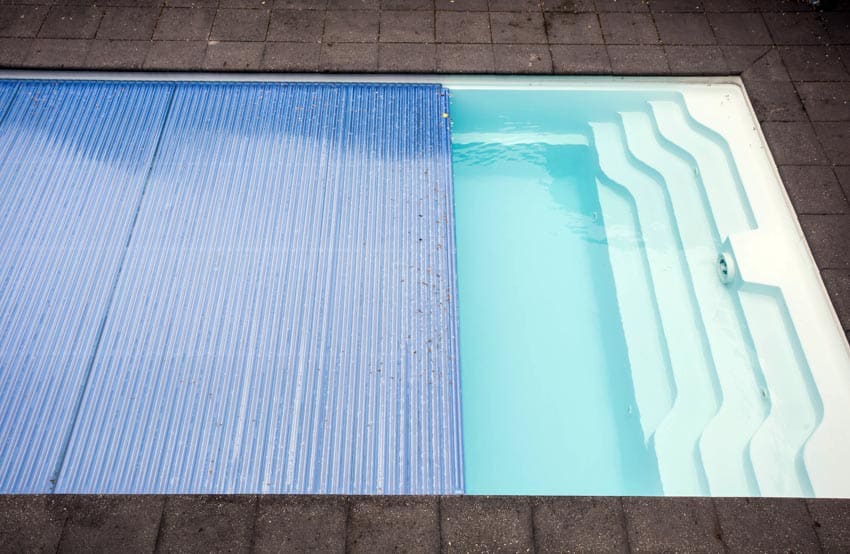
You can consider getting the automatic type if you want a covering for your pool with even more gadgets and conveniences than the hybrid cover. This design can either be hard, mesh, or hybrid to provide the exact level of coverage you require while mechanically rolling out or retracting at the press of a button. The cover can move along a track that runs just above your pool or one that is sunken underneath the deck’s border.
Automatic covers make use of the advantages of the material from which they are produced. Thus, if you choose an automatic mesh safety cover, draining and cleaning will be a breeze. Furthermore, of course, because automatic coverings are launched mechanically, they have one distinct advantage.
Among all the types of covers in this article, automatic covers are the simplest to apply and detach. There will be no anchoring, water bags, or hoisting. Simply pressing a button causes the cover to unfold. When you press it again, it retracts, all without putting a finger on the cover.
However, you might expect to pay more for this type of cover. Automatic covers have the largest initial cost as they offer the most practical and convenient covering approach. This is also due to the fact that they necessitate expert installation.
Automatic coverings, like hard safety covers, are strong and durable. They provide the same benefits while also being the safest among the covers in this article. However, they, too, necessitate the use of a cover pump to eliminate collecting water and the removal of any detritus.
Nevertheless, for many households, the convenience exceeds any disadvantages. An automatic cover retracts and folds up into itself, eliminating the need to locate storage space. It interacts with either a key, a button or switch, or a touchpad, rendering it by far the simplest to operate.
There are two kinds of automatic pool covers:
• Automatic Cover with On-Deck Track: The cover runs across a track around the perimeter. It retracts into on-deck housing.
• Automatic Cover with Recessed Track: The cover stretches underneath the border along an obscured track. It retracts into hidden or on-deck housing.
Positive and Negative Points of Automatic Covers
Pros:
• Automatic covers are very convenient to use. You can practically rely on them without lifting a finger.
• They can be operated by just pressing a button or switch.
• They are available in either mesh, hard, or hybrid covering.
• These covers are the most visually attractive, making your area look more modern.
Cons:
• Automatic covers are extremely costly.
• Since this pool cover is high-technology, it normally requires professional installation, which might add to its expensive cost.
What Materials Can Be Used for Automatic Covers
The materials used to build automatic types of pool covers may vary. For example, an automatic mesh cover normally uses woven mesh or solid vinyl along with polypropylene.
An automatic hard safety cover generally uses materials like reinforced vinyl. However, an automatic hybrid cover uses patches or vinyl and small portions of mesh.
Automatic Pool Covering Cost
An automatic cover is the most expensive type of pool cover. When purchasing an automatic cover, the price can start as low as $10,000 for a modest, commercial deck installation or a basic under-track system. However, this modern type of safety cover might cost up to $20,000 for a pool with more intricate swimming pool features.
How Do I Choose A Pool Cover?
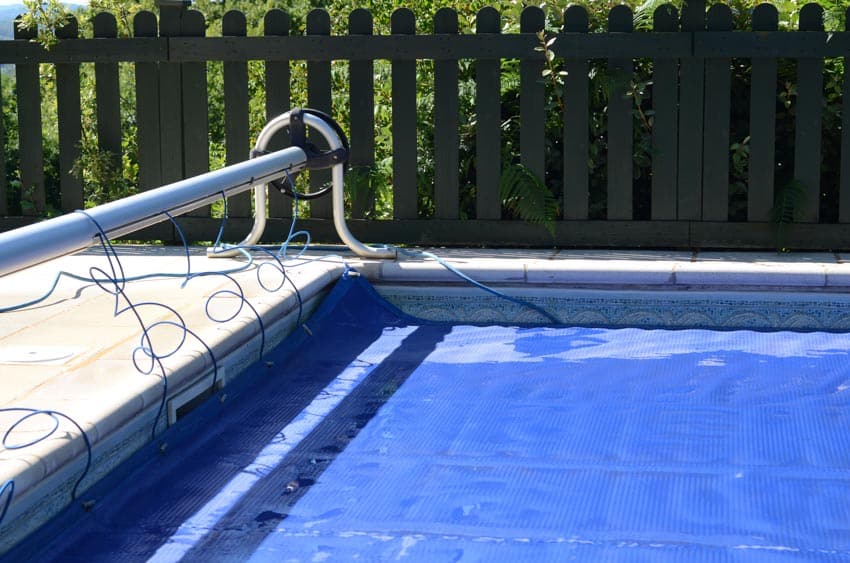
Although selecting a cover for your swimming pool may appear insignificant, it is critical to safeguard your well-loved pool, especially during the wintertime. Pool covers help to prevent snow, ice, and other detritus from getting in your pool and avert evaporation.
There are several different kinds of swimming pool covers. These different types are made to do different jobs. There are swimming pool covers that are intended just to keep leaves out; there are covers to keep people and animals out and there are solar heating covers which will warm up your pool and there combination covers that will heat your pool and keep intruders out of it. – Swimming pool ideas: The supreme home health apparatus, Owen Jones
Novice pool owners may not be aware of the proper procedure for selecting an efficient cover. Because choosing the right cover necessitates various variables such as swimming pool shapes, size, and material, you will want to ensure you have all of the pertinent information before making your purchase.
Measure the Size of Your Pool Cover: To effectively cover and seal your pool, the cover you will purchase has to be the perfect size for your swimming pool. Covers for in-ground pools must reach at least 3 inches over the pool’s edge, as per specialists.
You must first measure your swimming area to determine its dimensions before buying a cover. If your wading area has a common size, it will be easier and less costly to get one in stores. Otherwise, you must get a customized cover.
Identify the Shape of Your Pool Cover and Purchase the Best Material According to Your Needs and Preferences: Numerous manufacturers provide designs with symmetrical forms and clean lines, like rectangular or Grecian.
Pools with rounded corners or uneven sides, on the other hand, necessitate more work. If your wading area is oddly shaped, you will almost certainly need to order a customized pool cover. Moreover, you should choose the material that suits your needs and preferences.
Difference Between Automatic and Manual Covers
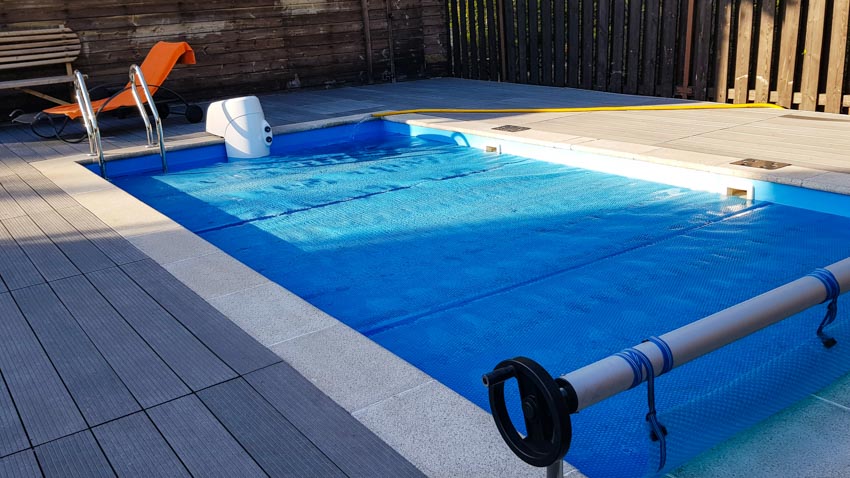
As the name suggests, manual-type pool covers are hand-cranked coverings that roll across two parallel sections of track, one on either side of the swimming pool. A manual cover is also an attractive complement to any type of pool. They are not intended to be used on pools larger than 18′ x 36′ since the cover might become too weighty to roll up. They employ a hand-crank mechanism that turns the huge aluminum covering tube, allowing the cover to slide on and off the pool.
Manual covers perform an excellent task of maintaining the pool’s cleanliness when you are not using it, and they also have a multitude of extra advantages. A manual style is one with a solid cover fabric. When the covering is hand-cranked above the pool, it prevents water loss due to evaporation, cuts on chemicals, reduce energy expenses, and, most importantly, serves as an ASTM-certified pool safety cover.
When the cover is in position, it protects all of the pool’s sides from inadvertent access. They are incredibly cost-effective for the various advantages they provide as they do not have a motorized mechanism or a costly electric generator.
On the other hand, when it comes to tracking and covering fabric, a completely automatic pool cover is very comparable to a manually controlled cover; in actuality, many consumers will buy a manual pool cover and then transform it into an automatic cover at a certain point in the future.
Automatic pool covers, similar to manual covers, conserve water, electricity, and chemicals, and they are also ASTM-certified safety covers. They also prevent grime, twigs, and other waste out of the swimming area when the covering fabric is placed over it, making it spotless and prepared for usage.
Electrical motors power the driving mechanism of automatic covers, which can be either electric or hydraulic. An electric button initiates the operation of turning on and off. This transition can be triggered by a button, a custom-designed electronic keypad, or a key-activated switch with a detachable key for added security.
The automatic pool cover is perhaps the most convenient kind of cover to use since it can be easily controlled using an electric switch. Swimmers may take advantage of the numerous advantages that these types of coverings provide over manual pool covers.
In terms of pool cover fabric functionality, there is extremely minimal distinction between these two types of covers when it comes to the benefits you can get.
The main difference is that the automatic cover is easier to use, so it is used much more frequently. Therefore, in the long run, the automatic pool cover beats manual ones in many aspects.
Best Inground Covers
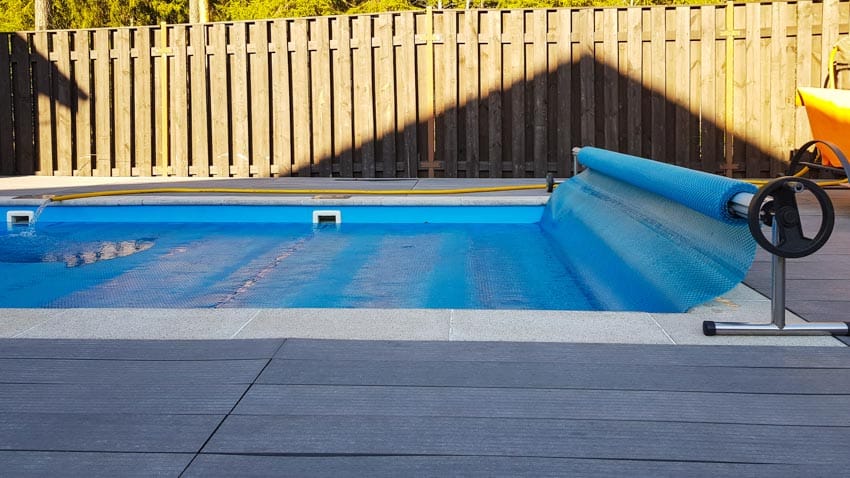
The ideal in-ground pool cover is determined by your most critical demands. A hard or automatic cover would be the optimal choice if you have small youngsters or pets. A solar cover is a wonderful option for those who reside in warmer climates. A standard safety winter type, on the other hand, will keep debris out of your pools without spending a lot of money.
Pool Supply World’s Velox silver solar pool cover is an excellent choice for in-ground pools. The UV-resistant material allows the sun’s power to flow through the water underneath the pool while also protecting pool chemicals from some of the impacts of UV exposure. This is a solid choice as it promotes safety, efficiency, and protection of your pool.
Best Above Ground Covering for the Pool
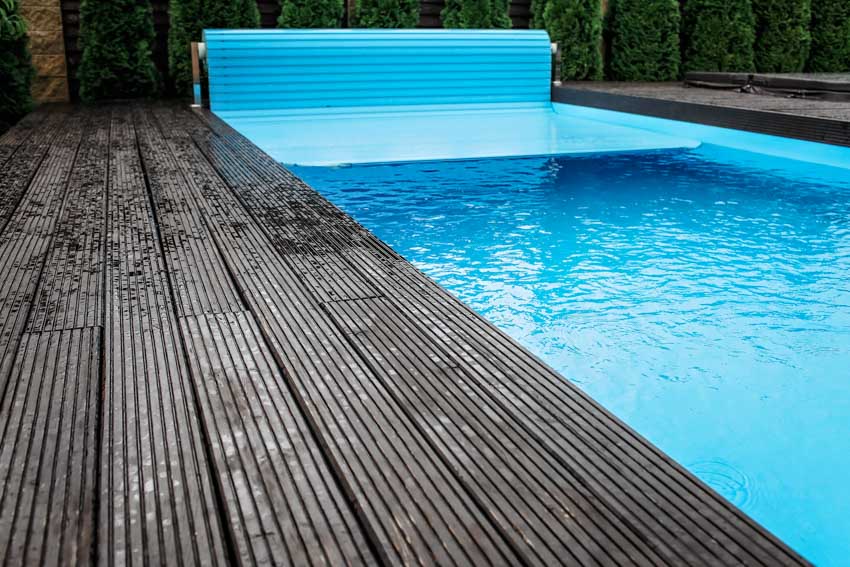
Mesh safety pool covers are arguably the best type of pool cover you can use for above-ground pools. Most of these mesh pool covers are UV-stabilized and can filter out debris and other particles effectively, which can help in keeping your above-ground pool spotless.
Robelle 3524-4 is a dependable above-ground pool cover you can use. It is a cover constructed of extremely tough polyethylene that should last for many years; it complements round-shaped 24-foot pools and is obtainable in other sizes.
Robelle has established a reputation for providing durable covers. This Robelle pool guard, like all others, is made of strong polyethylene material. Moreover, it is easy to install.
Do I Need a Cover for My Pool?
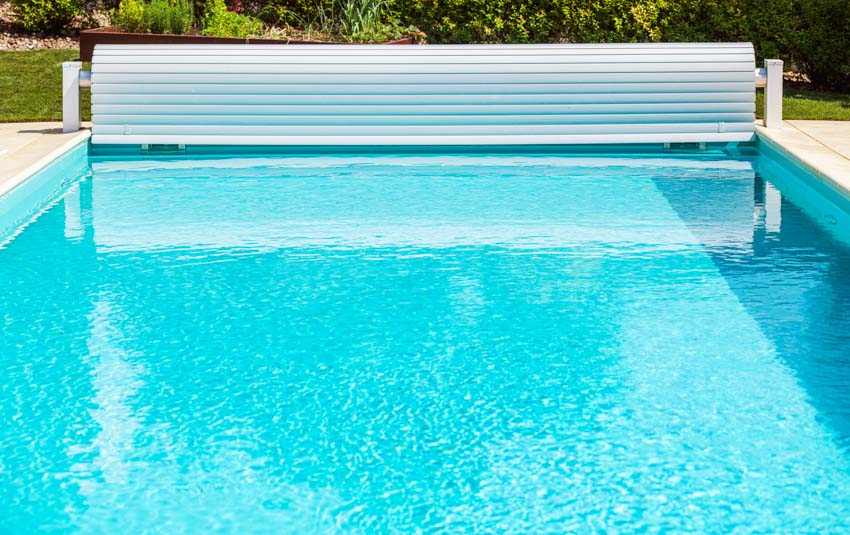
Yes. Using a pool guard offers a lot of significant advantages. It prevents water loss, retains the heat you want in your pools, reduces the usage of chemicals, keeps the bathing spot very clean, helps ensure safety, is easy to use, time-saving, and cost-efficient.
Do Solar Covers Work?
Solar pool covers do work properly. They are normally used on outdoor pools to maintain heat and prevent humidity, and they also add to its temperature. They are very efficient in terms of insulating the pools as well.
Do Solar Coverings for the Swimming Areas Cause Algae?
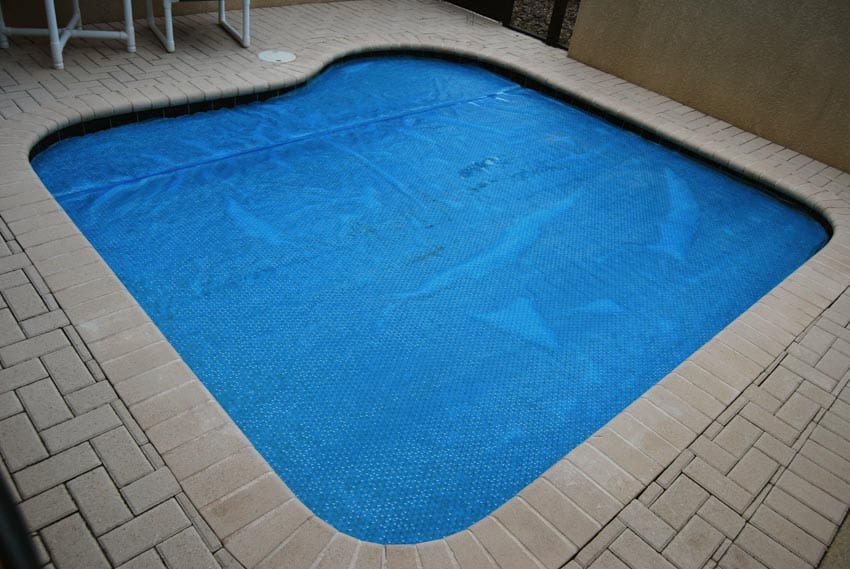
While a solar covering will not exactly make your wading area ‘green’, it can elevate the temperature of its water by up to 8 degrees thus, if the other circumstances are right, installing a solar cover might simply and quickly promote algae growth. You must correct the water balance in your pools before placing back the guard.
Walk On Pool Type
Covers for pools that can be walked on offer a different feeling of convenience. These covers that can be walked on are referred to as safety pool covers. Swimmers may stand up and walk right above the pool with safety and ease using a walk-on guards.
One of the better walk-on coverings is the Blue Wave rectangular ground safety guard. This swimming area covering equipment is excellent for in-ground pools and includes all of the fasteners and bolts required for people to walk across safely. It has a stainless steel framework and strengthened mesh-made strips.
Do Covers Heat the Pool?
Yes. Numerous owners claim that their pools get warmer after putting on a covering, especially if it is solar. Nevertheless, it is indeed crucial to understand how they work so you can obtain a better understanding of how they can heat your swim area
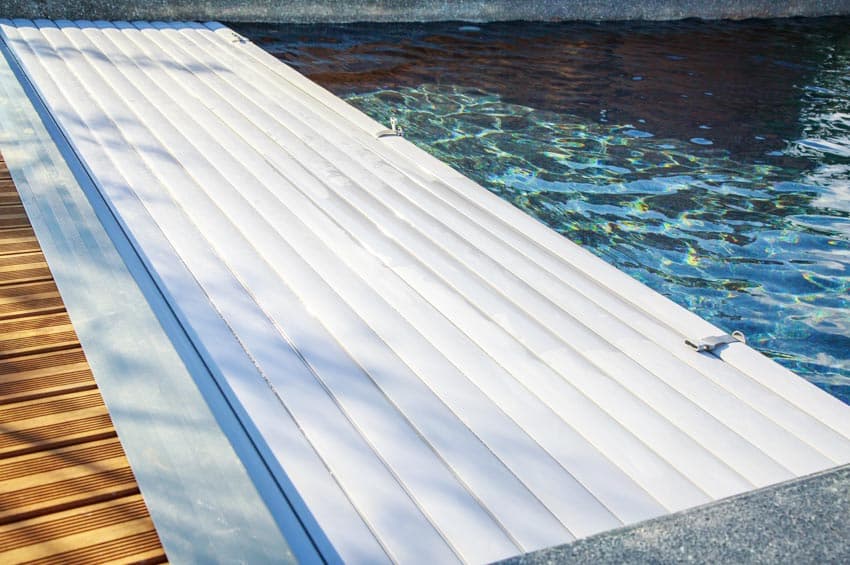
When the water in your swimming area evaporates, it takes the heat with it, lowering its temperature. Therefore, if you can eliminate evaporation, you can dramatically reduce heat loss. As a result, covering it will contribute to warming the water.
Does Pool Equipment Need To Be Covered?
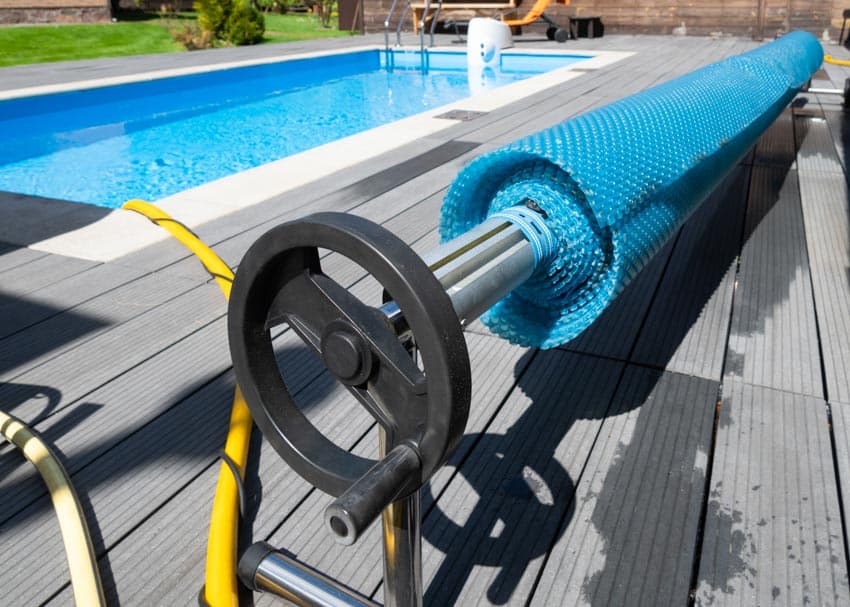
This will depend on your preferences and local climate. Pool equipment is designed to be placed outdoors. And we all know that many harmful environmental elements can accumulate in your pool equipment if you are going to leave it uncovered. That is why it is often necessary to keep them covered so you can protect your swimming pool from harmful outdoor elements.
However, as long as your water equipment is well-maintained and appropriately winterized, it does not need to be closed, since most equipment is built to withstand weather exposure. But, again, this will depend on your needs. Having it enclosed or exposed is both fine.
See more related content in our article about swimming pool waterfalls on this page.

